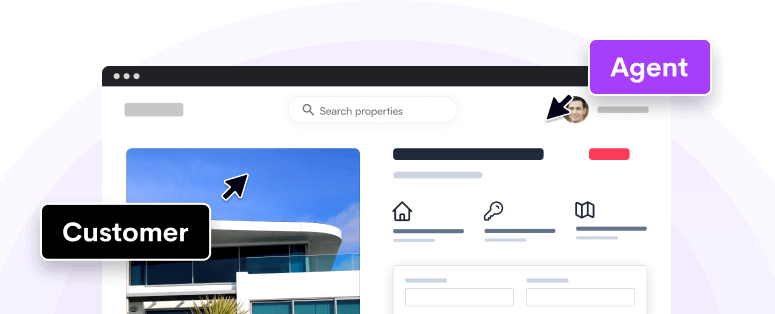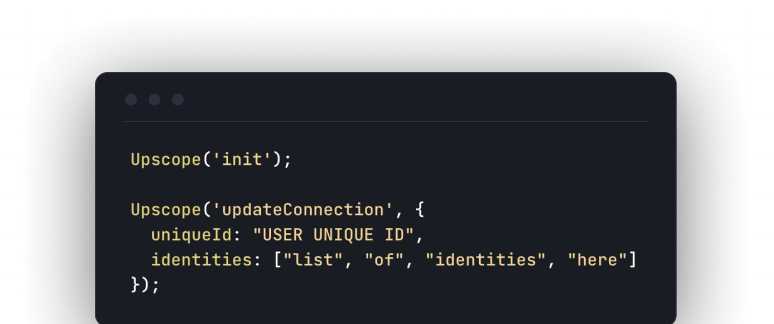What Are Customer Support KPIs?
Customer support key performance indicators (KPIs) are measurable performance metrics that organizations use to evaluate the efficiency of their customer support processes. These KPIs help measure customer satisfaction and assess how well a support team meets customer needs and resolves their issues.
8 KPIs to Measure in Customer Service
You may be wondering, how you measure KPIs for customer service. These common customer support KPIs include measurable metrics such as:
1. Average Ticket Resolution Time
The average ticket resolution time (ART) is the average duration it takes for a support team to resolve a customer support ticket - from the moment it is submitted to the moment it is successfully resolved.
A shorter resolution time contributes to a positive customer experience and enhances operational efficiency by allowing effective workload management.
2. Net Promoter Score
Net promoter score (NPS) is a KPI used to measure customer satisfaction and loyalty. It is a single question that asks customers to rate how likely they are to recommend a business’s product or service to others on a scale of 0 to 10.
There are many benefits to a high NPS including word-of-mouth marketing, customer loyalty, and a reduced churn rate.
3. First Response Time
First response time (FRT) is the average time it takes for a support team to initially respond to a support ticket from the moment it is submitted.
A lower FRT means the team engages with customers quickly and is committed to dealing with their issues immediately. Keeping an eye on FRT helps support teams make sure they're meeting customer expectations and helps them figure out how well their communication and response processes are working.
4. Cost Per Resolution
Cost per resolution is a metric to calculate the average cost incurred by a company to resolve a customer issue or ticket.
Cost per resolution helps companies see how well and cost-effectively they're handling customer support. By keeping an eye on this metric, businesses can figure out the economic impact of their customer support work and identify opportunities for improvement in resource allocation and operational processes.
5. Customer Retention Rate
Customer retention rate is the rate at which customers stay with a business in a given period of time.
A high customer retention rate in a competitive market is indicative of a company's ability to retain its existing customer base, which is crucial for long-term business success. It suggests that customers are satisfied with the products, services, and support and are choosing to continue their relationship with the company.
6. First Contact Resolution
First contact resolution (FCR) is the percentage of support tickets or customer inquiries that are resolved in a single interaction.
Improving FCR enhances customer satisfaction and contributes to operational efficiency by reducing the need for additional follow-up interactions.
7. Customer Effort Score
Customer effort score (CES) is a service metric that measures how much effort customers put in to interact with your business. It is often sent in the form of a survey after a customer purchases a product or service or after a customer interacts with your support team.
By minimizing customer effort, companies can create positive interactions, enhance customer relationships, and ultimately improve their overall business performance.
8. Volume by Channel
Volume by channel quantifies the number of interactions between the support team and customers through various channels.
This metric helps support teams understand the workload on their support channels and pinpoint opportunities for optimization.
How 3 Companies Improved Their Customer Support KPIs
1. Telecommunications company improves NPS by 149% while also increasing efficiency
With an antiquated automatic contact distribution (ACD) and a disconnected customer survey system, a Canadian telecommunications company was having difficulty achieving its goal of delivering outstanding customer service.
The problem
Their old systems made it hard to understand customer feedback and agent performance. Agents had to manually transfer callers to a survey system, and sometimes they forgot. They also needed a better solution to offer email and chat support to customers.
The solution
They chose various NICE CXone tools to meet their needs, like omnichannel routing, IVR, chat and email options, feedback management, and reporting.
Now, their surveys are automatic, so agents don't have to remember to transfer customers, resulting in more completed surveys. This gives the company valuable customer insights, helping them enhance performance and close the loop with unhappy customers. The addition of accurate real-time reporting also optimized the agent's schedules and improved their utilization. The new IVR system also adds efficiency, handling a percentage of calls.
The results
A 149% increase in net promotor score
A 93% increase in first contact resolution
Read the full case study here.
2. Upscope had developers do customer support to bring back satisfaction scores back to near 5/5
Upscope found that having developers and other team members do more support helped fix problems faster and fixing them faster helped raise CSAT back to the level it should have been.
The problem:
When customer 'session' ratings started falling at Upscope it was clear that there were a number of underlying technical issues to resolve for certain clients and the developers needed to be working daily in helping respond to clients when they left a lower session rating. The ratings had been on a steady decline from an average of 4.96 to 4.90, to 4.82. It was obvious to the customer support why they were falling but those who don't do customer support daily don't see the ground up problems.
The underlying dirty secret is that most other departments are afraid of doing customer support or think it's this 'other' activity. No-one can really handle an angry customer or wants to. No-one is going to get up from the job they love to do the job they most fear - directly interacting with customers using the software. The people building the interface don't necessarily also want to directly support customers using that interface.
The solution:
Pushing developers to help with support brought immediate results. They felt the pain directly, asked the right questions to understand the problem (the questions that other support team members did not or could not have considered).
Upscope is now also involving marketing and sales team members in support, so that they understand the product they market and sell, and so that they feel the pain points directly.
However, be prepared for pushback. Marketing and Sales don't want to do support because they believe they can empathise with customers without that.
Once they all get involved, weird things start happening. Problems get fixed faster, marketing and sales copy changes, their understanding of the product increases rapidly.
3. Aeromexico improves first contact resolution by 13%
Aeromexico constantly monitors customer support KPIs and seeks ways to enhance customer satisfaction, but their CX and employee experience (EX) were hindered by outdated customer support systems.
The challenge
The old system at the contact center was inflexible and hindered improvement for CX and EX. They also relied on a server outside the company's control meaning that they couldn't access data in real-time which made it hard to manage calls, schedule support staff efficiently, and quickly make data-driven improvements.
The solution
To stick to their values and improve their contact center, Aeromexico chose a cloud-based platform and implemented chat, email, and voice support. All of their agents are skilled in multiple areas, and the platform distributes tickets to the next available agent. Moving to the cloud with Genesys also made Aeromexico more flexible in serving customers when they need help, not just when they are available.
The results
Since implementing chat, email, and voice support through Genesys Cloud, Aeromexico has seen many improvements in CX. They have decreased their average speed of answer by 90% (from 289 seconds to 30 seconds), improved their FCR rate by 13%, and decreased their call abandonment by 75%. All of this has led to a 55% increase in their contact center’s NPS.
Read the full case study here.
Improve Customer Support KPIs with Upscope
Today, outdated customer support systems don't do much for your customer-facing teams or your customers. With a single negative customer support experience having the potential to drive customers away, organizations must be proactive in monitoring and enhancing their support departments.
These case studies highlight how modern support solutions enable companies to improve KPIs and operational efficiency. To learn more about how Upscope can help improve your support team, visit our product page and book a demo. Start relating to your customers today!






